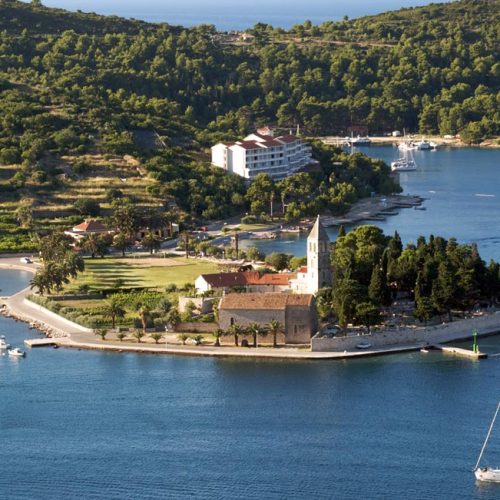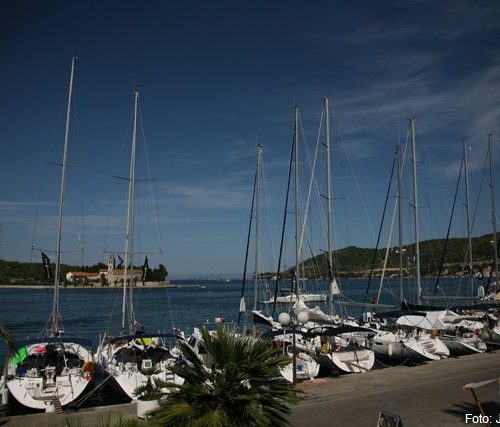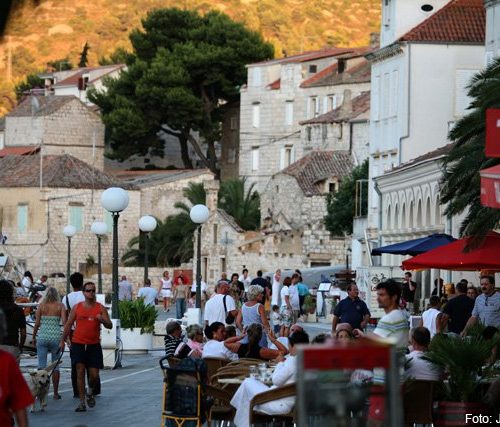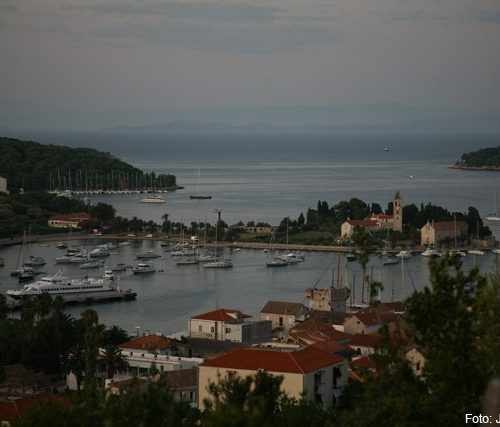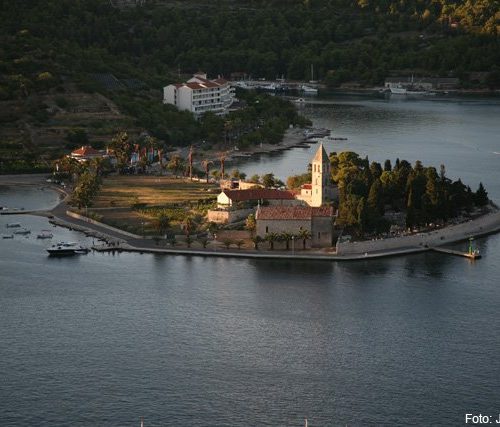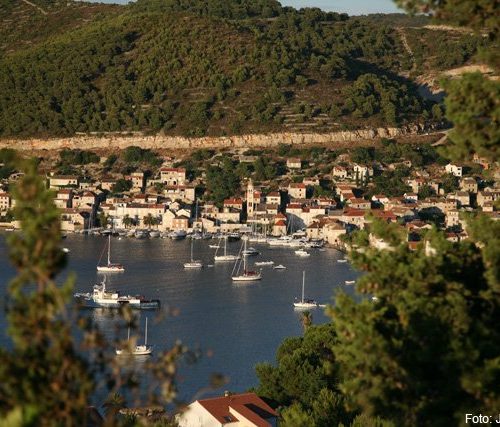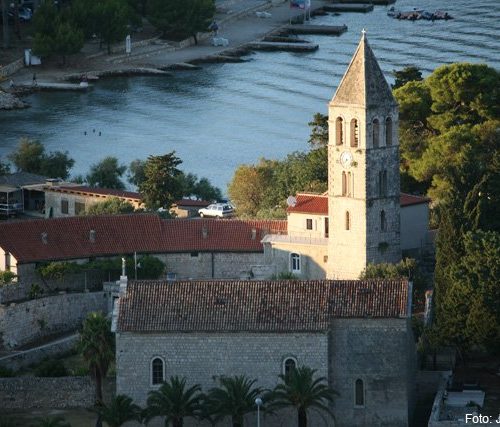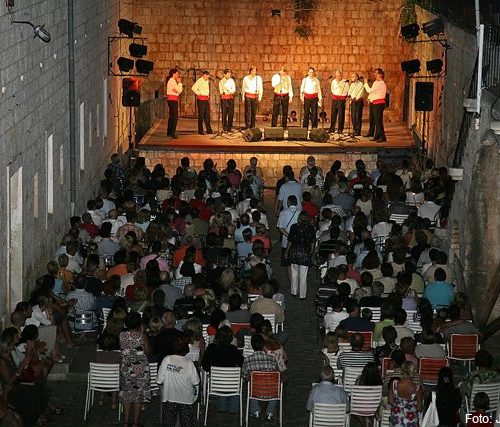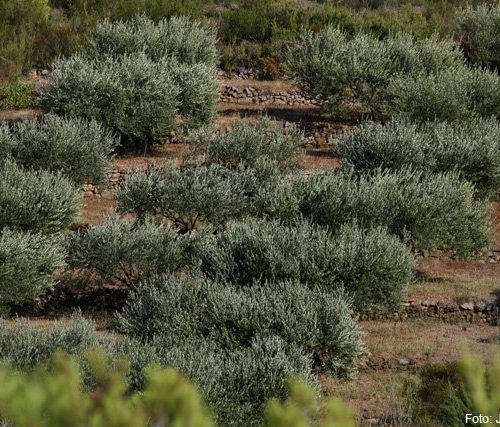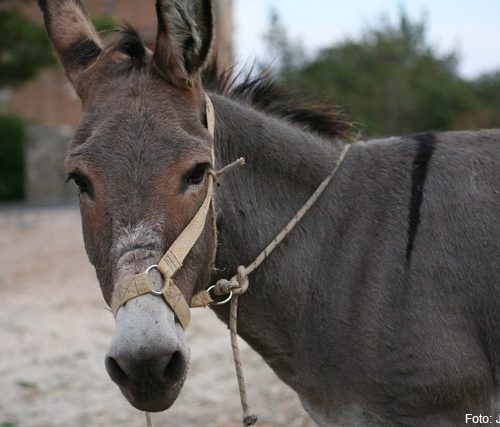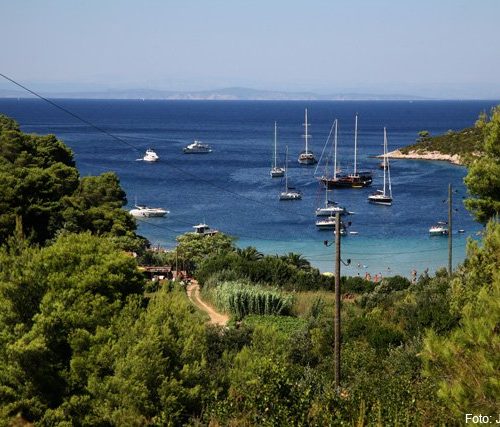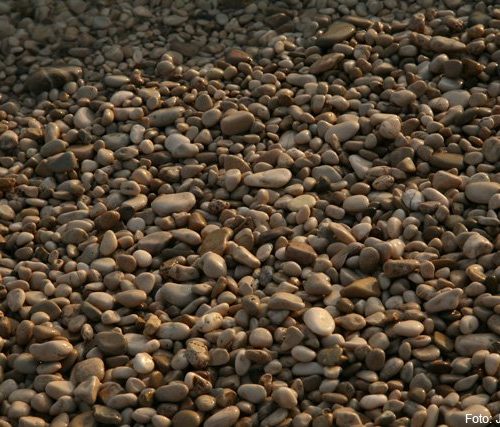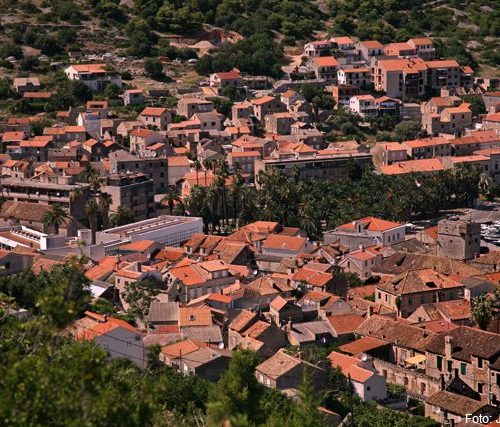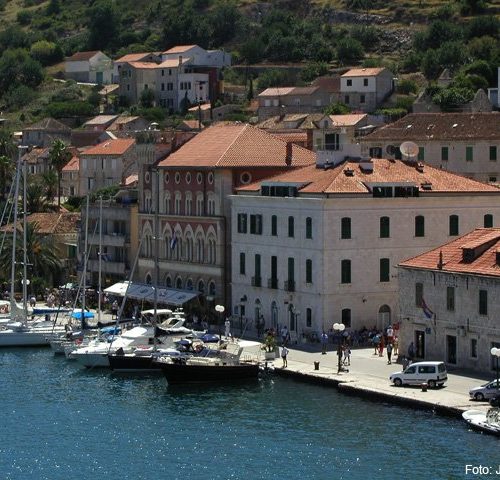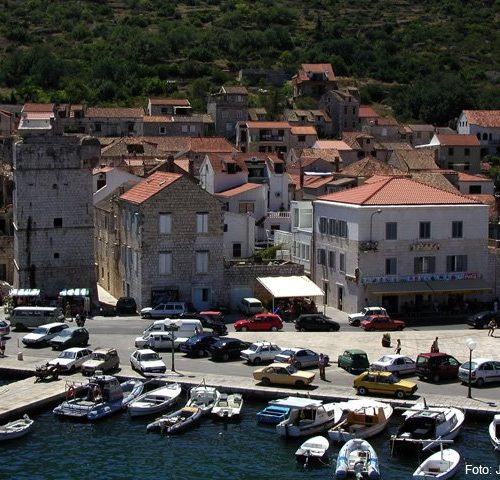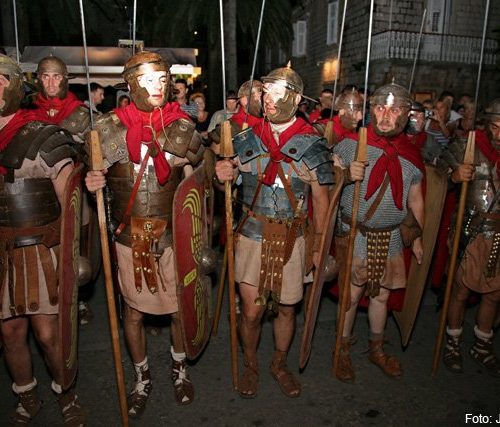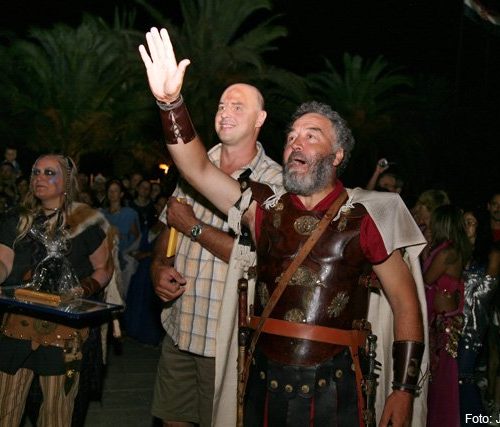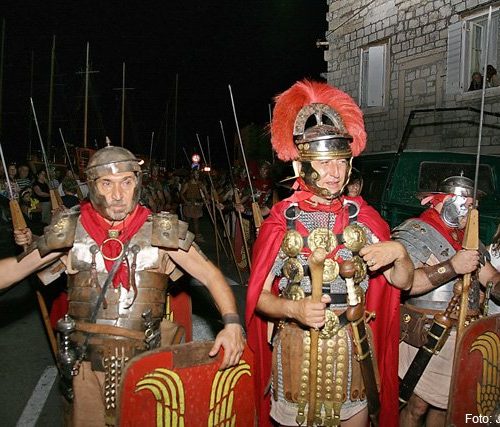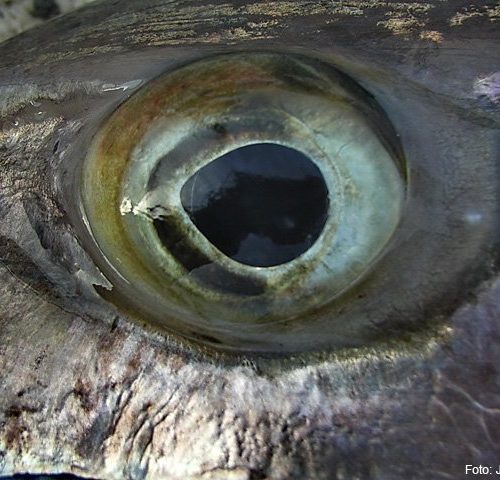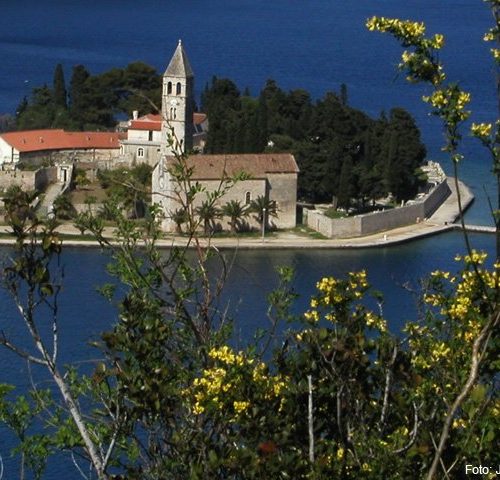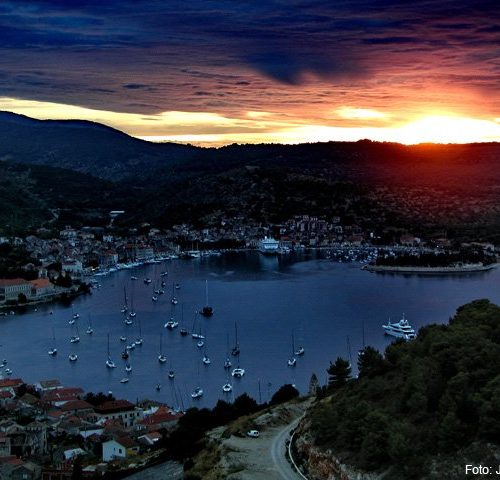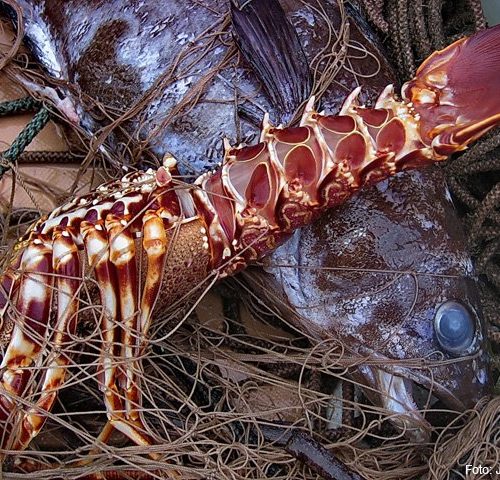Town of Vis
About the town of Vis
Vis has always been a town and for a short period a state as well.
At the beginning of 19th century 12,000 people lived here from all over Europe. That influenced Vis’ language where you can find, besides the derivates of the Venetian dialect, English, French, German and even Hungarian words.
Compared to Hvar or Korčula, Vis faces the land and is open to everything coming from there. Its port even today offers shelter for many fishermen and seamen, lost researchers and other dejected adventurers.
That is how the Greeks from Syracuse found the port of Vis which reminded them of home.
Hvar poets created Kut (the Corner) as the sun caressed them from the west during the winter months.
In contrast, Vis land workers constructed Mola bonda e Mijurovac for the sun to wake them up from the east at dawn.
After Englishman fortified the hills around the bay, diligent Austrians raised the Batarija fortress to bond the town finally into one unit.
Today when, at the beginning of August, you drive on the road to Vis, it really looks like a metropolis. Its shiny illumination extends, like at Christmastime, from the waterfront around the entire bay over the decorated masts, to all the town suburbs, where the lantern on the islet of Host flashes to the north. To the west, like a suburb the Stonca bay illuminates the cove always full of fishermen’s boats and local sailing boats whilst to the east the Renaissance town of Kut appears. The peaceful idyll of Kut encounters the summer turbulence of the port in Our Lady’s Batarija. A concert currently takes place within the Austrian fortress, a little owl can be heard and under its walls, Spanish visitors are usually the loudest there. A number of people come out in front of the summer cinema once the animated film has just finished, and the feature film is about to begin. On the waterfront new elements and toys shine. There are lasers, led lamps and a variety of coloured stroboscopes. Under the stern of the mega yacht called Aikea Guinea, the arctic neon glares and under it the flathead mullet have party, the two of them together are really big catches. Even the saxophone can be heard around here, “Fly me to the moon” whilst in front of the bank a boat karaoke show is moored. A French band plays In Bejbi and under the reflectors over Issa’s necropolis, someone has scored a goal.
And everything brings back memories of the golden 1812 although at that period the economy was blossoming and nowadays we are dealing with a recession, but there again steam boats sailed into the port then and another illuminated “town” came to Vis.
Photogallery
A short history of Vis
In an area where, from one side, a series of islands start to appear making the eastern Adriatic coast so special, and on the other, the open sea extends including the Strait of Otranto, we can find the island of Vis. This exceptional geographical location comprises fertile fields in the island’s interior and a large number of fish in the surrounding sea, and has attracted people for many years. Already in the early Stone Age, Vis was a meeting point for navigation routes, of peoples of various origins and of a variety of cultures. This has been the main characteristic of Vis’ history since ancient times until the present day.
The combative Illyrian seamen had been impeding the Greek invasions into the Adriatic for centuries, especially on its eastern coast. At the same time this meant a lack of written historical sources regarding these areas and about Vis as well. This silence of ancient chronicles was broken only by the notes of the half legendary Illyric ruler of Vis, Jonije, who ruled over this island at the end of 6th and at the beginning of 5th centuries B C. It is considered that the close Ionian Sea received its name from powerful Jonije too.
Vis became of interest to ancient historical sources in 4th century BC when the tyrant of the Greek town Syracuse, Dionysus the Elder, in his propensity to become the most powerful ruler of Mediterranean, founded his own colony – Issa on the site of present day Vis. Issa soon became an independent town-state (polis) and coined its own money. Its citizens traded throughout the Mediterranean and the town soon began founding its own colonies. Issa became especially famous in the ancient world thanks to the excellence of its wines.
Under Roman rule, Issa lost its independence but still enjoyed social and economical growth which can be seen in the remains of the large thermae from the Roman period. At first this improvement stopped and then, together with the fall of Roman Empire, stagnated alongside the antique civilisation.
The economic crisis, diseases, depopulation and barbarian attacks closed one chapter in Vis’ history. A new chapter began with the arrival of the Slavic immigrants from the north – the Croats, in 7th century. The new inhabitants soon inherited their maritime skills from the natives as well as knowledge with regard to the cultivation of Mediterranean agricultural plants. Vis was part of the early medieval Kingdom of Croatia and its inhabitants were well skilled seamen and pirates. As a result of this, at the end of 10th century, the Venetians attacked and destroyed Vis.
The Vis inhabitants retreated into the island’s interior and concentrated primarily on the cultivation of the land. Vis became part of the municipality of Hvar. The Hvar aristocracy had large terrains here and use of these was an important part of their income.
Retreat from the shore did not bring the Vis population permanent safety nor did the fact that since 15th century the island has been a part of the powerful Venetian Republic. In 1483, the Catalans, directed by the Neopolitan king, devastated Velo selo – the largest settlement in Vis’ interior. The experience drawn from this attack as well as the rising danger from Ottoman and Arab attacks, persuaded the Vis people to establish a powerful settlement on the shore in order to defend the island. Both the Croatian gentry and the common Vis population rose along the Port of Vis’ shores their houses, surrounded by walls, were both residential, part of the defence and administration facilities. In this way two settlements, Kut and Luka, were founded from which later the modern town of Vis was founded.
During the Renaissance and Baroque period, in spite of the continuous danger from attacks from the sea, Vis experienced economic and cultural growth. As part of the Venetian Empire, Vis and its port were important points of traffic where both people and goods from the far-away European north to the Far East came together.
The Napoleonic Wars presented a large turnover in Vis’ history. Napoleon annihilated the ancient Venetian Republic. At first, Vis came under Austrian and then under French rule. The especially important fact was that in 1810, Vis was taken over by the British. Here, they built fortresses whilst Vis inhabitants became rich quickly by smuggling British goods onto the shores where Napoleon banned the import of British goods.
From 1815 Vis was under Austrian rule. The new rule continued with the fortification of the islands as started by the British. This proved to be justified when the young Kingdom if Italy, in its nationalist enthusiasm, tried to take over the eastern part of the Adriatic. Taking over Vis should have had a key role. In 1866 the large and modern Italian fleet led by admiral Persan tried to take over Vis. They were opposed by a small and old-fashioned Austrian war fleet led by admiral Tegetthoff. In spite of clear inferiority, the Austrian fleet won. This stopped Italian territorial pretensions in the direction of the eastern coast of the Adriatic for the following fifty years.
Vis developed quickly under Austrian rule. Vis people are distinguished as skilful fishermen and seamen whilst their wines were especially appreciated throughout the Austrian Empire. The economic growth was followed by a sudden population growth. This sudden development was suspended by the onset of the catastrophic grape disease – phylloxera at the beginning of 20th century. Large incomes from wine production suddenly decreased followed by a wave of emigrations particularly to transoceanic countries.
This was only the beginning of the turbulent 20th century for Vis. After the First World War, Vis was under Italian rule for a short period, and later under the Kingdom of Yugoslavia. 1941, the Italians took over Vis again and abandoned it, after the Kingdom of Italy fell to Yugoslavia in October 1943 when Vis and the entire island came under the rule of Yugoslav Partisans. Vis became the centre in which the foundations of the new Yugoslavian state under communist rule were set up. There is also a Yugoslavian aerodrome here and the island was a base for commanders and the Yugoslavian fleet who attacked the rest of the eastern Adriatic coast that was occupied by Germans from here.
Vis continued to play the role of military base in socialist Yugoslavia. It was closed to visitors as a strategically important point for decades. These circumstances slowed the development of tourism on the island down, but protected the island from the uncontrolled construction of tourist facilities that is characteristic of a sudden development of tourism.
In May 1992, the Yugoslavian army left Vis and it stopped being a military base. This situation opened the town of Vis and the whole island, as part of the new independent state, offering it new development prospects.
Marin Knezović

